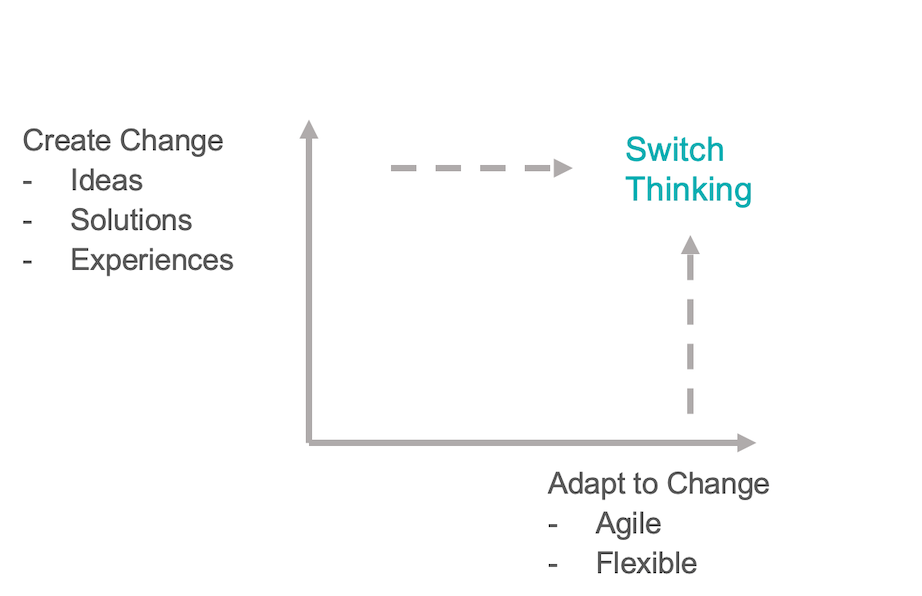What’s the one constant today?
Change.
What will be the one constant tomorrow?
Even more change.
And it’s a different type of change.
Unexpected, rapid, exponential, messy and chaotic.
It’s both exciting and exhausting.
Potentially threatening for existing brands yet full of opportunities for startups for example.
Consider the changes that are happening in the way we work for example.
– Going to an office for 5 days a week is so yesterday.
– Working 9 to 5 or 40 hours a week is up for grabs.
– Face to face meetings, presentations or reviews are optional.
– Dress can be informal depending on the time of day and where you are working.
Its sudden, dramatic change on a large scale.
Now imagine working in an organisation that is being buffeted by unpredictable external changes and now multiply this with the seemingly endless wave of internal changes.
For example, it could be an incremental or profound change to:
- Deadlines
- Priorities
- Team Design
- Budgets…
Change.
And more change.
This begs the question – how to succeed in such an environment?
One strategy might be to be forever in a state of flux when the environment changes.
In short, to continuously change everything you do.
This might work for a one person business for example.
But is this sustainable?
It feels exhausting just thinking about it.
Imagine changing your structures, processes, behaviours even if these have been successful at the drop of a hat.
It would be incredibly inefficient and wasteful.
This endless flowing strategy leads to other questions:
What do you or your brand stand for?
What are your enduring values?
What is your purpose?
So let’s move on from the continuously changing team and organisation.
What about another approach which is to ignore change and stick to the knitting so to speak.
This strategy provides structure, safety and a common purpose.
But it can lead to rigidity as the world moves on and you can be left behind.
Even the Catholic Church or the English Monarchy has had to introduce some changes over the years to remain relevant.
A rigidity in thinking can be easily copied and surpassed by competitors and leave customers, clients and consumers feeling bored.
We don’t for example have one best way to:
- Obtain information
- Listen to music
- Engage in social media
- Learn a new skill
- Think about a problem
So the unchanging model does not work either.
But there is a way forward.
Let’s imagine a new approach to change.
What if we could have some stability and also some change.
And be able to switch and connect the two depending on the need or situation.
You need an anchor and a sail.
You need to be swim far out to sea and be able to return to the shore.
Imagine being able to feel safe and change at the same time.
This switching between different concepts, states and modes of thinking is empowering.
You are in control.
You feel energised.
Much like at a gym for example when you might switch between say an exercise bike and a rowing machine.
It will depend on your goals and needs at the time.
You have choice.
You can create and adapt to change.
Switching between different approaches is an amazing source of new energy, ideas, solutions and growth opportunities.
I call this new approach to change – Switch Thinking.
It gives you (and others) a new flexible, creative and agile tool kit.
And yet reflects and respects what has worked in the past, what are your values and purpose and what you are good at.
It’s called Switch Thinking and it’s the ultimate future skill.

